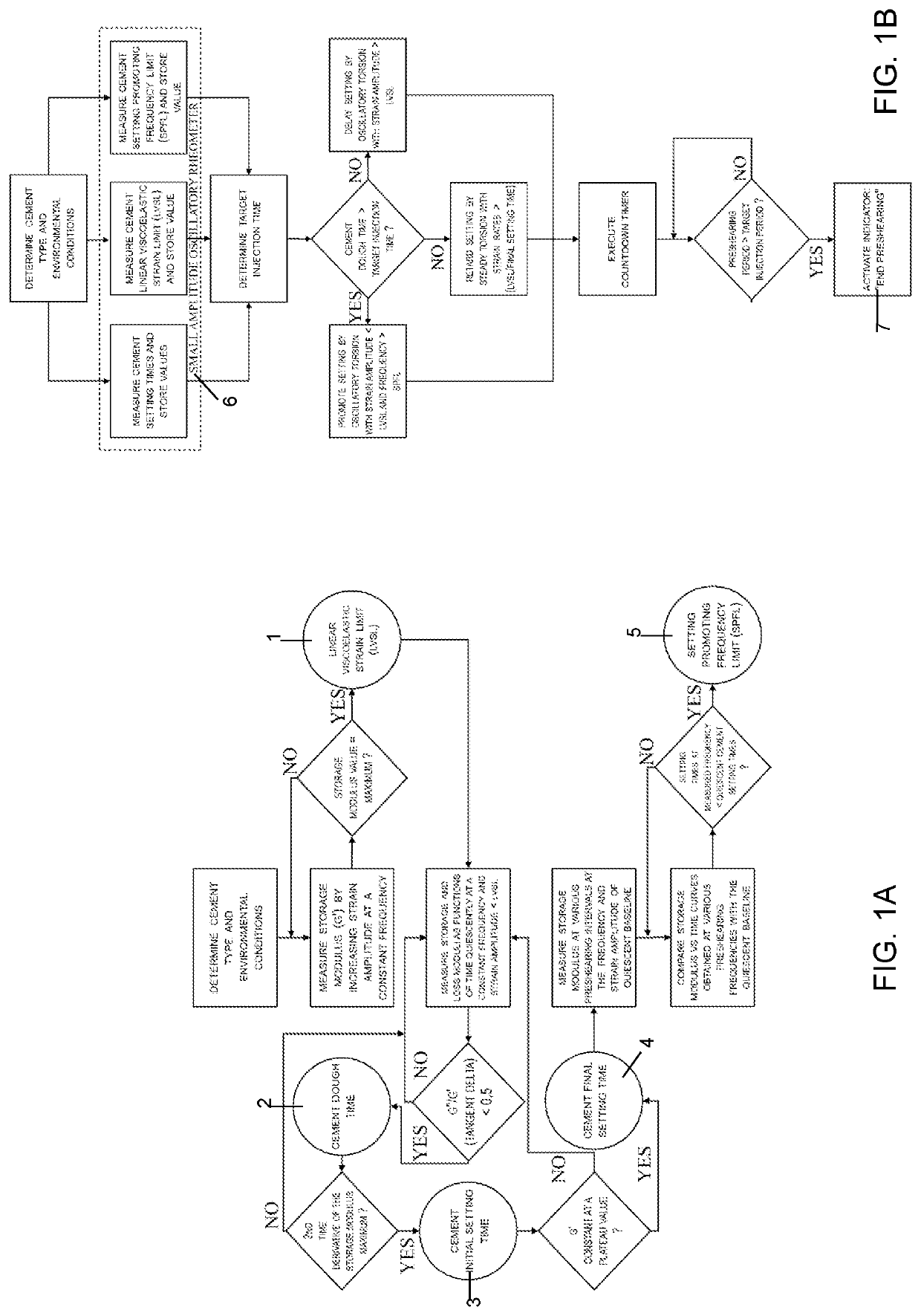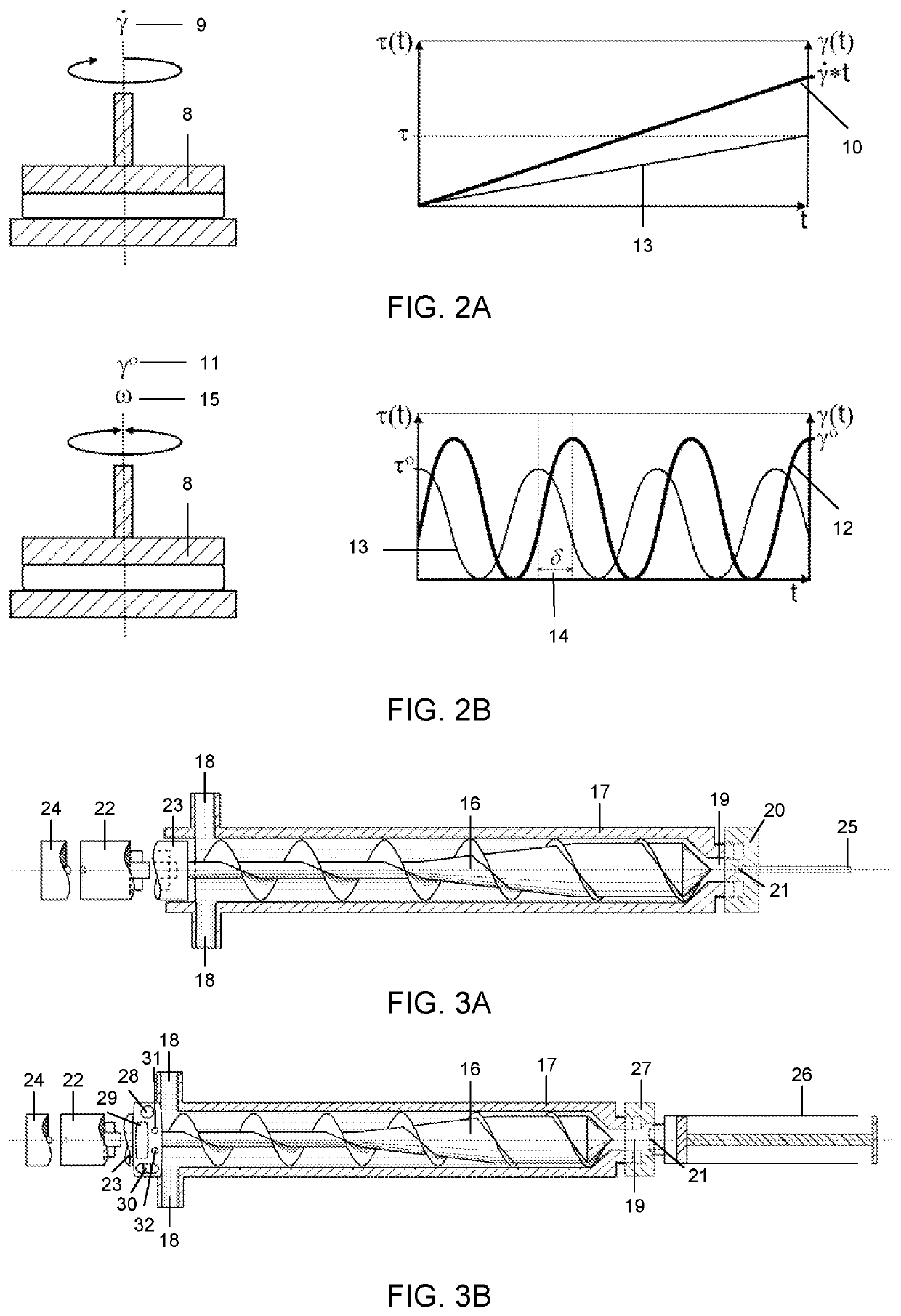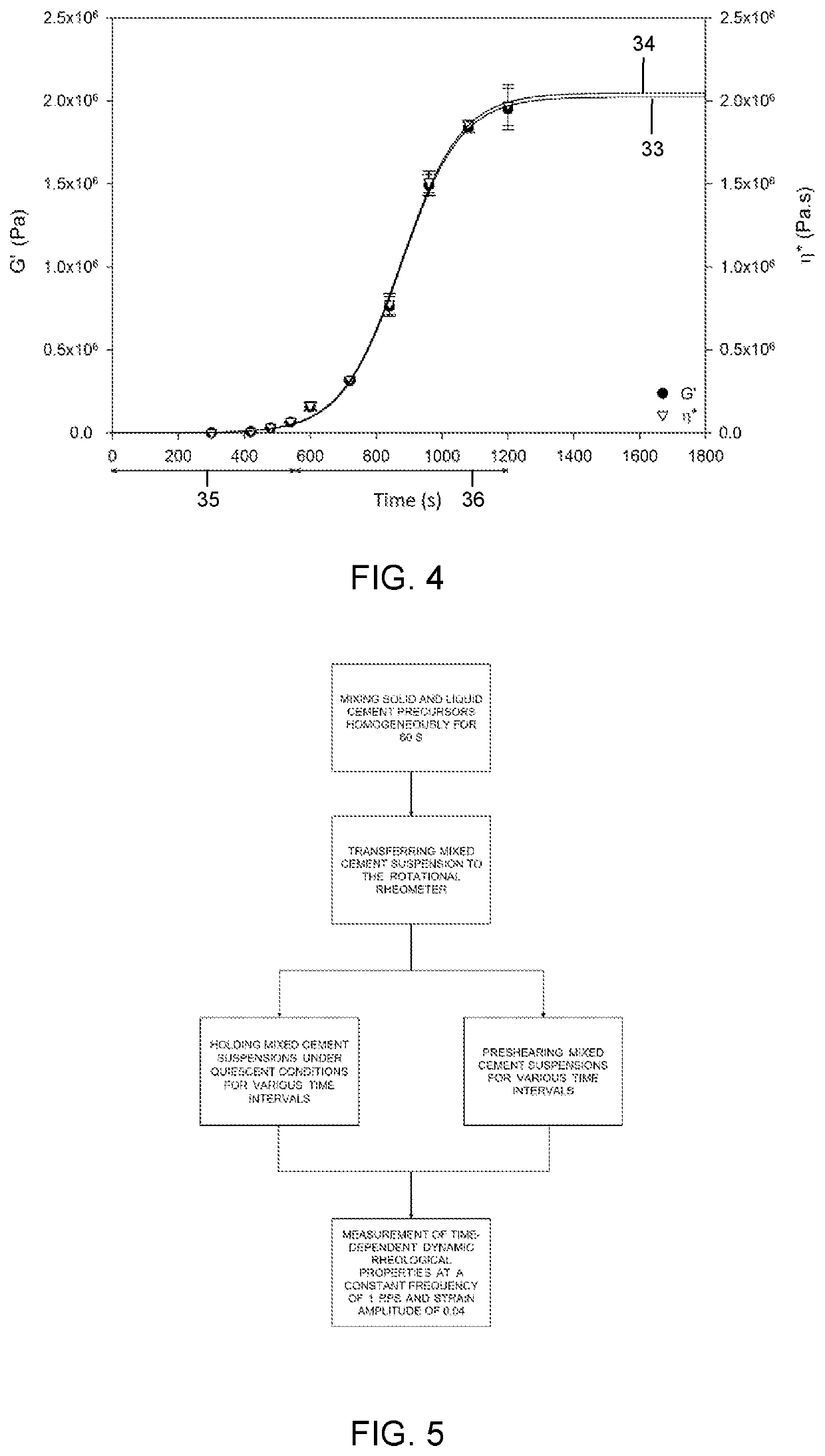Preshearing method for the control of the rheology and the injectability of aqueous inorganic cements
a technology of inorganic cement and prehearing method, which is applied in the field of inorganic cement, can solve the problems of inability to inject cement paste via the pressure applied on the ram by the surgeon to the treatment site, inability to adjust the setting time and flowability of the cementitious suspension, and inability to add the additive manufacturing of relatively slow setting cementitious. to achieve the effect of facilitating the extrusion of cementitious suspension
- Summary
- Abstract
- Description
- Claims
- Application Information
AI Technical Summary
Benefits of technology
Problems solved by technology
Method used
Image
Examples
example 1
[0052]The formulations and the preshearing method have been tested using a small amplitude oscillatory rheometer, i.e., a parallel plate based shearing device with one plate (disk) stationary and the second either rotating in one direction continuously (CW or CCW) or oscillating between CW and CCW directions. The shearing device has the ability to impose a constant or cyclic shear rate and to measure the torque and the normal force as a function of time, temperature and rate of shear. The rheometer can thus characterize the elasticity and the shear viscosity of the cement paste as a function of the previous shearing history. The diameter of the two disks can be varied between 8 to 50 mm. The calcium phosphate cement formulations of this invention are placed in between the two plates at a typical gap of separation of 0.5 to 4 mm. In the steady torsional mode the shearing device can typically generate shear rates which are in the range 0.01 to 100 1 / s (the shear rate is defined as the...
example 2
[0062]The cement precursors in Example #1 without seed particles were mixed at a powder / liquid ratio of 1.0 and citric acid concentration of 0.1 M. Here the effects of preshearing are followed via systematic changes in the frequency as well as the strain amplitude. FIGS. 10A and 10B show that as the frequency of the preshearing is increased at a constant strain magnitude of 1, the setting of the cement paste is delayed significantly with increasing frequency, consistent with the findings associated with Example #1. Despite the fact that applied strain amplitude of 1 was greater the linear viscoelastic strain limit for this cement formulation, preshearing at a frequency of 0.1 rps and strain amplitude of 1, 43 resulted in setting kinetics similar to the quiescently set cement (not shown). Further increasing the frequency at this relatively high strain amplitude to 1 rps, 44 and 10 rps, 45 slowed down the setting proportionally.
[0063]FIG. 10 shows the effect of the strain amplitude on...
example 3
[0064]The application of interrupted cyclic deformation of the ceramic paste (cyclic increase and then decrease of the frequency) versus continuously oscillated (at constant frequency and strain amplitude) was tested using the cement precursors of Example #1 with a powder / liquid ratio of 0.8 and citric acid concentration of 0.4. The effects of stepwise cyclic change in applied frequency on bone cement dynamic rheological properties were investigated by varying the frequency from 0.1 rps to 1 rps, from 0.1 rps to 10 rps, or from 0.1 to 100 rps as well as increasing the number of times the frequency is altered during the course of total deformation period. The frequency was altered between 4 and 15 number of times. The schemes for cyclic changes in frequency between 0.1 rps to 100 rps in conjunction with three different number of cycles over the total deformation period are shown in FIG. 11A, FIG. 11B, and FIG. 11C. The application times for each step change 48, 49, 50 varied from 250...
PUM
| Property | Measurement | Unit |
|---|---|---|
| diameters | aaaaa | aaaaa |
| diameter | aaaaa | aaaaa |
| frequencies | aaaaa | aaaaa |
Abstract
Description
Claims
Application Information
 Login to View More
Login to View More - R&D
- Intellectual Property
- Life Sciences
- Materials
- Tech Scout
- Unparalleled Data Quality
- Higher Quality Content
- 60% Fewer Hallucinations
Browse by: Latest US Patents, China's latest patents, Technical Efficacy Thesaurus, Application Domain, Technology Topic, Popular Technical Reports.
© 2025 PatSnap. All rights reserved.Legal|Privacy policy|Modern Slavery Act Transparency Statement|Sitemap|About US| Contact US: help@patsnap.com



